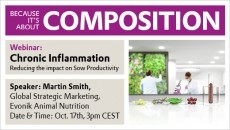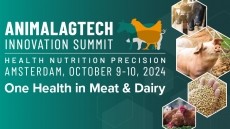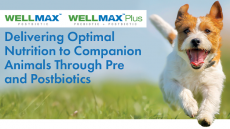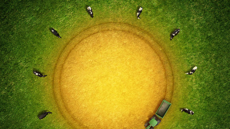Special Edition: Lowering the carbon footprint of feed
Do PEF category rules allow sound analysis of the ecological impacts of feed? Yes, says FEFAC

The EU feed industry was the first sector to have its Product Environmental Footprint Category Rules (PEFCR) officially approved by the EU Commission, back in February.
FEFAC was involved in the technical secretariat of the Feed PEFCR. Nicolas Martin, policy advisor at that EU feed industry representative body, told us the methodology is credible; it took four years of intensive work to reach this point, he stressed.
“The PEF pilot phase was a multi-stakeholder process, there were several organizations involved, all Member States were represented on the steering committee, and we had a number of public consultations during the process. The final document offers companies the capacity to make their own calculations, which is the most important aspect of this for us.
“The PEFCR provides a good basis for feed companies to get involved, to do their own reporting and starting measuring the evolution of their [environmental] performance.”
Identifying hotspots
The feed sector can help the livestock sector to reduce its emissions, stressed Martin.
“For monogastrics, in particular, feed represents a significant share of the emissions. So how we look at it is that if you want to reduce the emissions of animal products, it is [important to carry out an environmental footprint of] the feed. We believe we have a role to play in that. Companies have already made progress on nutrition and efficiency, they are going in the right direction in terms of emissions reduction. What we had been missing, up until now, was a kind of benchmarking system to do that, and that is what the PEF can deliver on.”
Typically, he explained, feed companies could use PEFCR to identify hotspots. “They can get a better understanding of where the impacts come from, they can do an analysis of their products and see then whether [hotspots relate] to their supply chain, to their cultivation practices or whether there is a way they can optimize logistics. Then they can work on those hotspots and see if the performance can be improved and what are the potential trade-offs. So it is an additional tool for companies to make decisions regarding purchases, or about their entire organization, taking a new parameter into account, which is the environmental performance.
“They can try different options and measure the PEF results again in one or two years after that and see if any progress has been made.”
Awareness raising
It is still early days in terms of take-up, though, given that the Feed PEFCR was only approved a few months back.
Martin acknowledged there is a need for more education, for greater awareness raising with industry around the PEF tool, and perhaps, adjustments are required to make it easier to implement at the company level.
The trade group has already disseminated the results of the PEF pilot project at conferences and at the AGMs of some FEFAC members. “We may run seminars or workshops on the more technical aspects at a later stage if there is demand.”
The FAO-LEAP Feed Guidelines published in April 2015 were a key reference document in the development of the PEFCR, ensuring alignment of the methodological framework at global and EU level.
“The Commission recognized the value of the work we had done with the FAO previously in terms of developing the LEAP guidelines.”
The PEFCR is stricter than LEAP on the technical side, added Martin. PEFCR is a standardized methodology, whereas the LEAP guidelines give several options on how to do things, he said.
The rational for such standardization was the Commission’s ambition that the PEF would facilitate comparison between products and then allow consumers, ultimately, to choose between product A and product B, steering the various sectors along a greener path. “We believe, at this stage, that it makes more sense, particularly taking into account the number and quality of the data available, to compare the same product over time.”
The scope of the Feed PEFCR is feed sold in the EU market, including imported feed, but, evidently, assessing the LCA of imported ingredients is complex. The Global Feed LCA Institute (GFLI) database of key feed ingredients, which FEFAC helped develop, has supported the development of the PEF tool in this respect.
“The good thing is that to support the implementation of the PEFs, the Commission decided to purchase some data and to make them freely available. Methodology is one part of the cost but the other part is the data. The Commission bought the GFLI [feed ingredient] data for use in the Feed PEFCR so there is now alignment between the two activities."
Climate change
FEFAC is looking to capitalize on the work it has done in developing the Feed PEFCR. It wants to play a role in development of further EU policy discussions on the use of PEF to support any environmental claims, he said.
“This [PEF methods] is, for us, something that can be used in the context of climate change agreements. Some may have already started but countries will have to look now at how to implement, at national level, the commitments that were made in Paris and, for us, it would make a lot of sense the apply the PEF methods to do that, as it would provide a harmonized framework to run the greenhouse gas emissions calculations.”
Other sectors have acquired similar approvals from the Commission for their PEFCRs including pet food, dairy products, beer and wine. However, the red meat pulled out of the pilot phase in early July 2017 over a technical disagreement.
“We would welcome more PEFCRs for downstream partners. That is still the missing link. There is one for the dairy sector but we need them also for other type of animal product sectors. It would increase the value of the Feed PEFCR if there was more demand for this kind of analysis from partners down the chain.”


















